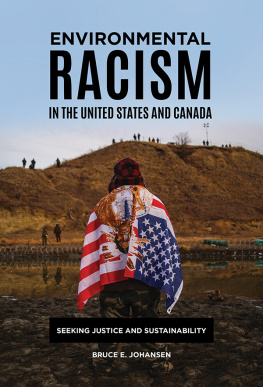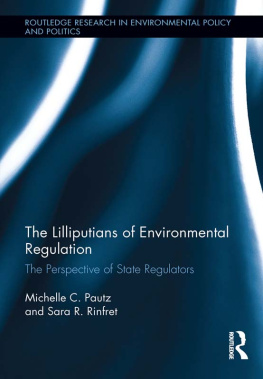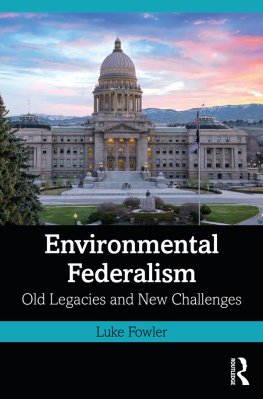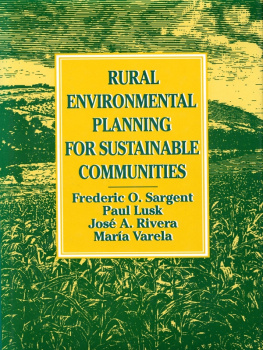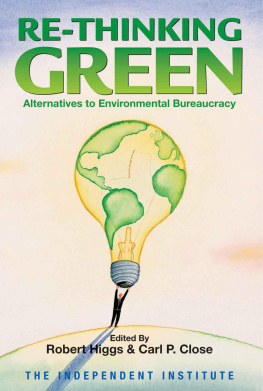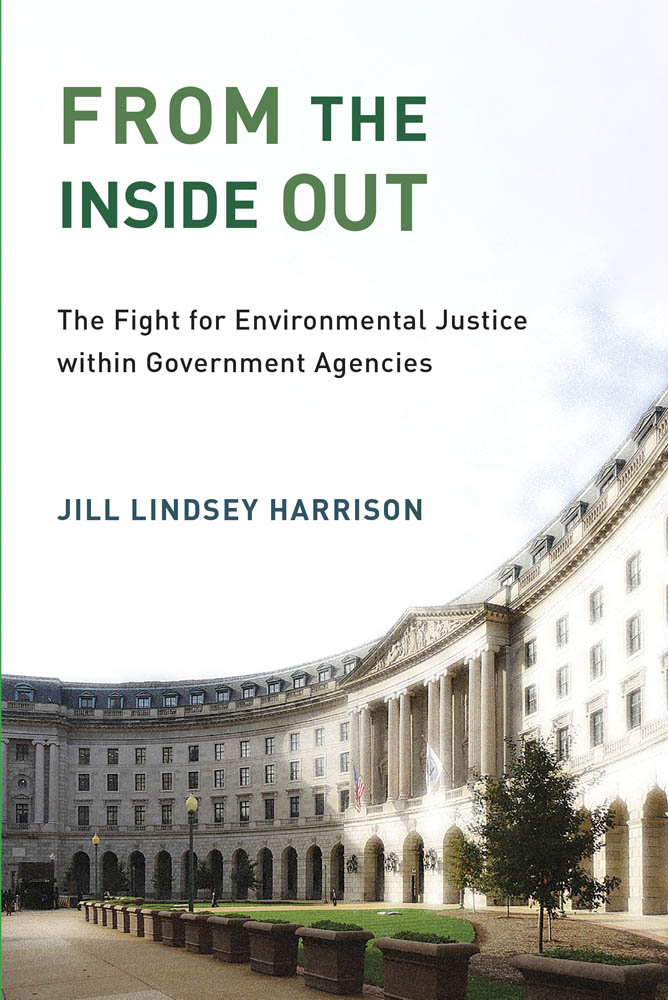Contents
Guide
Pagebreaks of the print version
Urban and Industrial Environments
Series editor: Robert Gottlieb, Henry R. Luce Professor of Urban and Environmental Policy, Occidental College
For a complete list of books published in this series, please see the .
From the Inside Out
The Fight for Environmental Justice within Government Agencies
Jill Lindsey Harrison
The MIT Press
Cambridge, Massachusetts
London, England
2019 Massachusetts Institute of Technology
All rights reserved. No part of this book may be reproduced in any form by any electronic or mechanical means (including photocopying, recording, or information storage and retrieval) without permission in writing from the publisher.
This book was set in Stone Serif and Stone Sans by Westchester Publishing Services. Printed and bound in the United States of America.
Library of Congress Cataloging-in-Publication Data is available.
Names: Harrison, Jill Lindsey, 1975- author.
Title: From the inside out : the fight for environmental justice within government agencies / Jill Lindsey Harrison.
Description: Cambridge, MA : The MIT Press, 2019. | Series: Urban and industrial environments | Includes bibliographical references and index.
Identifiers: LCCN 2019001210 | ISBN 9780262537742 (pbk. : alk. paper)
Subjects: LCSH: Environmental justice--Governmental policy--United States. | Environmental policy--United States. | Administrative agencies--United States--Decision making.
Classification: LCC GE230 .H37 2019 | DDC 363.7/05610973--dc23 LC record available at https://lccn.loc.gov/2019001210
For Teresa DeAnda
In moving EJ [environmental justice] at this agency and at other agencies, there has to be a cultural shift. We just celebrated the 20th anniversary of the Executive Order [on Environmental Justice], and the Office of Environmental Justice [at U.S. EPA] has been around since 1992. So, the question is, how long does evolution actually have to take? [I tell my colleagues,] folks in the community dont get a chance to leave. They have to live with these things, day in and day out. People are still getting sick. People are still dying. I work on EJ issues because it is my passion. You have to bring that level of commitment, because you are not always going to be able to say and do things that are going to make everybody happy inside of this building. That is not why we are here. We are here because there is an injustice. That is the way we were raised when Dr. Gaylord was Director of the Office of EJ. She said, Be bold. You are an advocate for communities. If you are at the EPA, remember that your job is about protecting the health and the environment of folks. [S]tay focused on the most vulnerable communities and making sure that we are doing everything in our power to help improve their lives and to stand up against injustice in whatever form or fashion that may present itself. When we raised our right hand, that oath that we took was to make sure that we were doing those things.
Jamie, government agency EJ staff person
You have no idea how difficult it is until you walk into the agency and work there. You are going up against the standard way of doing business. People have no idea what the EJ staff people are dealing with on the inside.
Nicky, government agency EJ staff person
Contents
Preface
I have written this book during a dark moment in the history of environmental regulation. The Trump administrations attacks on environmental protections and other civil rights are devastating in scope and consequence. Scholars, environmental and human rights activists, journalists, retired government staff, and even some current staff in unprecedented public protest have criticized the Trump administrations attacks on environmental protections. I believe deeply in the importance of a strong state that protects human and environmental rights. My research and teaching show how, despite the many problems with current public institutions, we need them.
Yet, environmental regulatory protections have never been evenly applied. Working-class, racially marginalized, and Native American communities have always been disproportionately exposed to deadly environmental hazards relative to wealthier, white communities. Moreover, as I show in this book, environmental regulatory agency staff who express deep pride in their work also express disinterest in or even hostile resistance to environmental justice (EJ) reforms designed to improve conditions in the nations most environmentally burdened and vulnerable communities. In so doing, these well-meaning people, widely regarded as politically progressive, engage in practices that undermine prospects for social justice and equity. In this book, I grapple with this contradiction to provide new insights into why agencies have such a hard time implementing EJ reforms that would systematically extend environmental protections to racially marginalized, working-class communities.
My argument in this book is that, while changes in administration most certainly shape regulatory practice and environmental outcomes in significant ways (Dillon et al. 2018; Fredrickson et al. 2018), so do some of the everyday practices through which staff defend their understanding of their agencys priorities and commitments. This book is about the shapes staff resistance to EJ takes, how persistent it has been, where it comes from, and what its consequences are. Importantly, this pushback against EJ reforms endures from one administration to the next. Staff make these agencies what they are and will continue their work into future administrations. Even under the best of circumstances at the federal levelduring the Obama administration, whose top leadership actively endorsed EJ, appointed high-level EJ staff, and assigned EJ training to all employeesEJ-supportive staff felt that their efforts were stymied by the ways some of their own colleagues responded to proposed EJ reforms and treated EJ staff. To truly support environmental justice, government agencies not only need supportive leadership and resources, but also need to look within and address their own cultural dynamics through which some bureaucrats undermine EJ reforms. Business as usual wont cut it; changes have to be made.
I have multiple goals in writing this book. Academically, my findings about environmental regulatory culture contribute novel insights into why government agencies EJ efforts fall so short of EJ advocates principles. On a more practical level, I want to generate conversation about what standards society should use to judge the fairness and effectiveness of environmental regulation. I believe that environmental equity should be a key metric according to which we judge these public institutions. However, some staff do not. That feels problematic to me and something that should be subject to democratic debate. Additionally, I write this book to show that staff are active participants when it comes to their agencies progress on EJ reforms, and that they have choices about what impact to have on such work. Clearly, their work is highly constrained by resource limitations, environmental law, analytical tools, and other factors largely outside their control. They work hard and often feel that they have little room to maneuver. However, staff also reveal that they have discretion over how to do various tasks, which, understandably, they cherish. Moreover, bureaucrats, like the rest of us, carry into their jobs ambitions and ideas about the right and best ways to do their work. So, in characterizing bureaucrats work, our narratives cannot only be about the material constraints within which they find themselves. We also have to attend to


